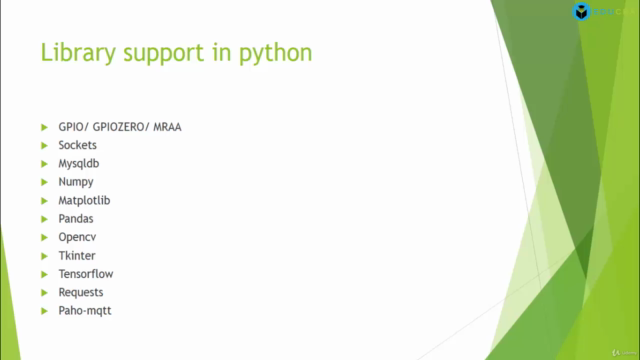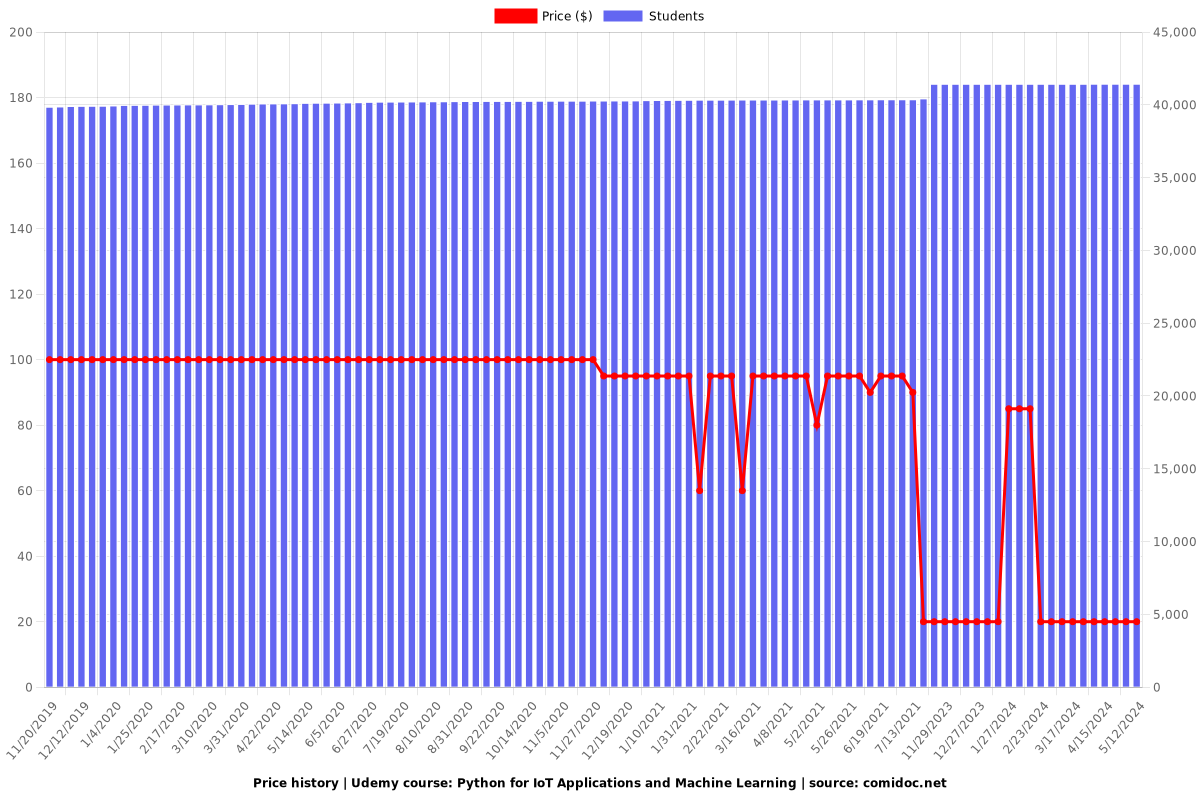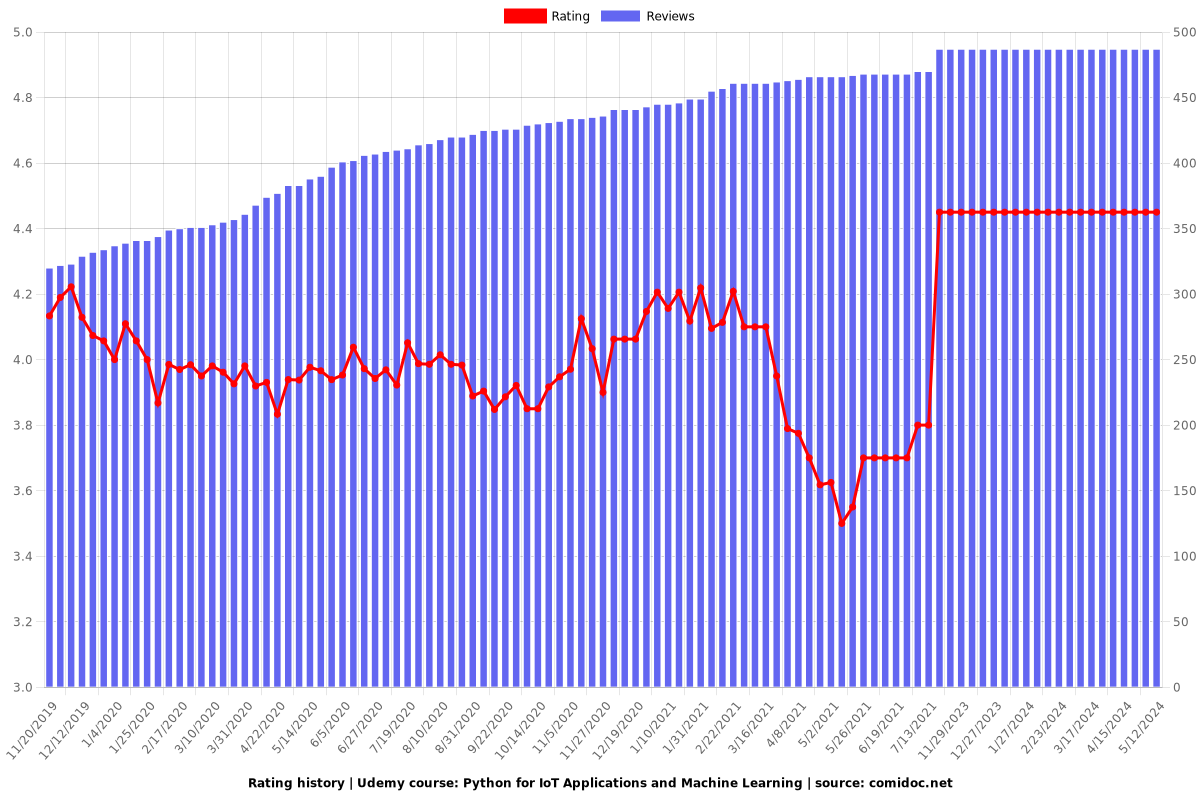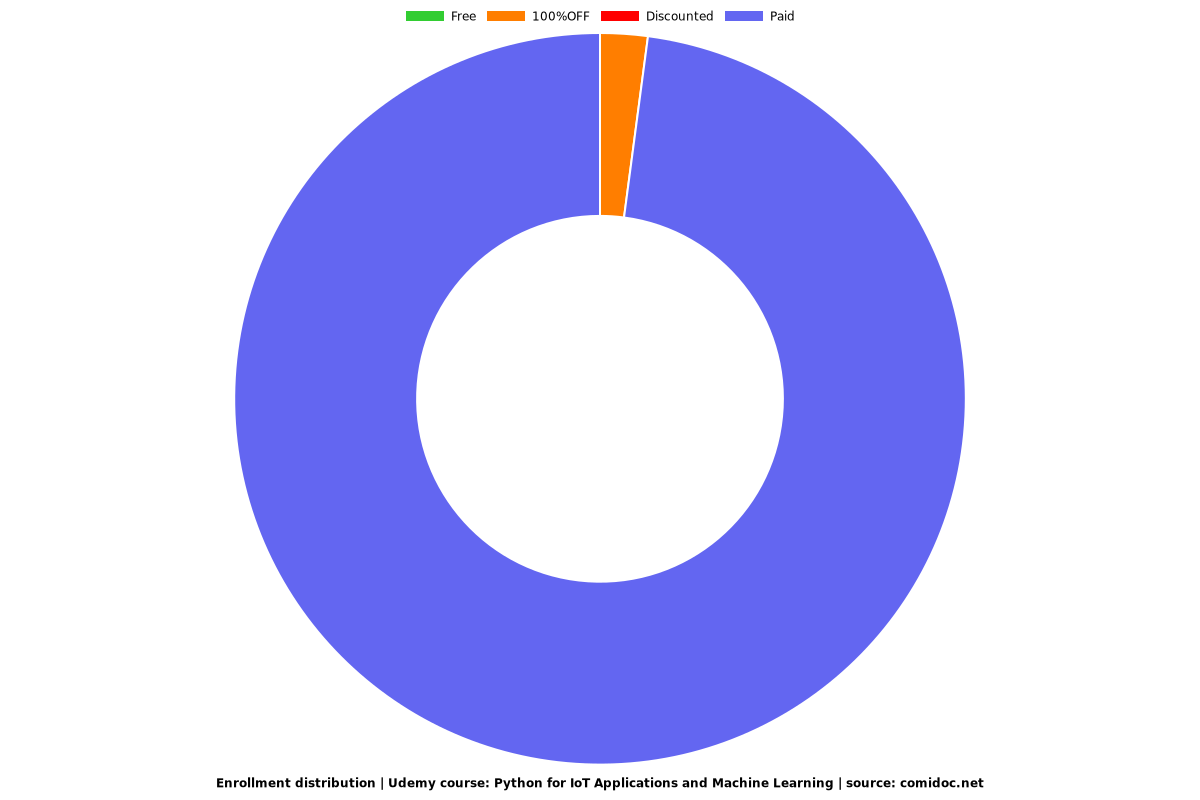Python for IoT Applications and Machine Learning
Master Python for IoT applications and machine learning to create smart and intelligent systems.

What you will learn
Python programming fundamentals for IoT applications and machine learning.
Data types, operators, and control structures in Python.
Object-oriented programming concepts and their application in IoT and ML.
File handling techniques and reading/writing data from/to files.
Connecting IoT devices and programming them using Python.
Applying machine learning algorithms for data analysis and decision making in IoT systems.
Understanding and implementing decorators for enhancing functions.
Practical examples and projects demonstrating real-world IoT applications and machine learning integration.
Why take this course?
Welcome to the Python for Internet of Things (IoT) course! This comprehensive program is designed to equip you with the necessary skills to leverage the power of Python in IoT projects. Whether you're a beginner or an experienced programmer, this course will provide you with the knowledge and tools needed to develop innovative IoT solutions using Python.
Throughout this course, you will learn how to install and set up Python for IoT development, explore fundamental programming concepts such as variables, data types, operators, and functions, and delve into advanced topics like object-oriented programming (OOP) and file handling. Additionally, you'll gain hands-on experience through practical examples and projects, enabling you to apply your newfound skills in real-world scenarios.
By the end of this course, you'll be proficient in using Python to build IoT applications, manipulate data, interact with sensors and actuators, and solve complex problems in the IoT domain. Whether you're interested in home automation, industrial IoT, or wearable technology, this course will empower you to bring your ideas to life and make meaningful contributions to the rapidly evolving field of IoT. Let's embark on this exciting journey together and unlock the full potential of Python for IoT innovation!
Section 1: Introduction
This section provides an introduction to Python for Internet of Things (IoT) applications. It covers the basics of Python programming and its suitability for IoT projects. The lectures introduce the library support available in Python for IoT development.
Section 2: Installation and Startup
In this section, students learn how to install and start using Python for IoT projects. It includes practical examples demonstrating the setup process and provides a simple example of Python code execution. The section also explores built-in functions in Python.
Section 3: Variables and Datatype
Here, students delve into variables and data types in Python. The lectures cover the fundamentals of declaring variables and the various data types supported in Python. It extends into more advanced topics like type casting and data type conversion.
Section 4: Operator
This section focuses on operators in Python. It covers arithmetic, comparison, logical, bitwise, and assignment operators. Students learn through examples how to perform operations using these operators.
Section 5: Default Parameters in Functions
Students learn about default parameters in Python functions. The lectures explain how to define functions with default parameters and how to utilize them effectively in function calls.
Section 6: Examples on Arithmetic Operator and Functions
This section provides practical examples demonstrating the use of arithmetic operators and functions in Python. Students learn how to calculate the area of a triangle and perform arithmetic operations using Python functions.
Section 7: Returning Multiple Values from Functions
Here, students explore how to return multiple values from functions in Python. The lectures include examples illustrating various scenarios where functions can return multiple values.
Section 8: Formatted Output
In this section, students learn about formatting strings in Python. The lectures cover different formatting techniques and provide examples to demonstrate their usage.
Section 9: Format Method
Students delve into the format method in Python, which is used for string formatting. The lectures explain the syntax of the format method and its various functionalities with examples.
Section 10: Comparison Operators and Statements
This section covers comparison operators and conditional statements in Python. Students learn how to use comparison operators to compare values and how to construct conditional statements using if, elif, and else statements.
Section 11: Loop
Here, students explore looping statements in Python, including while and for loops. The lectures provide examples illustrating the usage of these loops for repetitive tasks and iterating over data structures.
Section 12: Strings in Python
Students learn about strings in Python, including string manipulation and various string methods. The lectures cover topics such as string concatenation, slicing, and searching within strings.
Section 13: Lists in Python
In this section, students learn about lists, one of the fundamental data structures in Python. The lectures cover list creation, manipulation, and common list operations.
Section 14: Examples on Lists
Students are presented with examples showcasing the usage of lists in Python. The lectures demonstrate how to perform various operations on lists and solve problems using list comprehension.
Section 15: Sets in Python
This section introduces sets, a collection of unique elements in Python. Students learn about set operations, set methods, and practical applications of sets in Python programming.
Section 16: OOP in Python
Students delve into Object-Oriented Programming (OOP) concepts in Python. The lectures cover classes, objects, inheritance, encapsulation, and polymorphism, providing a solid foundation in OOP principles.
Section 17: Packages and Modules
Here, students learn about packages and modules in Python, which are used for organizing and reusing code. The lectures cover module creation, importing modules, and exploring standard Python packages.
Section 18: Packages and OOP Example
Students are presented with examples demonstrating the usage of packages and Object-Oriented Programming concepts together. The lectures provide practical insights into structuring and modularizing Python projects.
Section 19: Dictionaries and Packages
This section explores dictionaries, a key-value pair data structure in Python. Students learn about dictionary operations, dictionary methods, and how dictionaries can be used effectively in Python programming.
Section 20: Global and Local Variables
Students delve into the concepts of global and local variables in Python. The lectures explain the scope of variables, global keyword usage, and best practices for variable declaration and usage.
Section 21: Decorators
In this advanced section, students learn about decorators in Python. The lectures cover decorator syntax, defining decorators, and practical examples demonstrating the use of decorators in Python programming.
Section 22: Reading From a File
Here, students learn about file management in Python. The lectures cover file handling operations such as opening, reading from, and writing to files, providing essential skills for data manipulation and processing tasks.
Screenshots




Reviews
Charts
Price

Rating

Enrollment distribution
